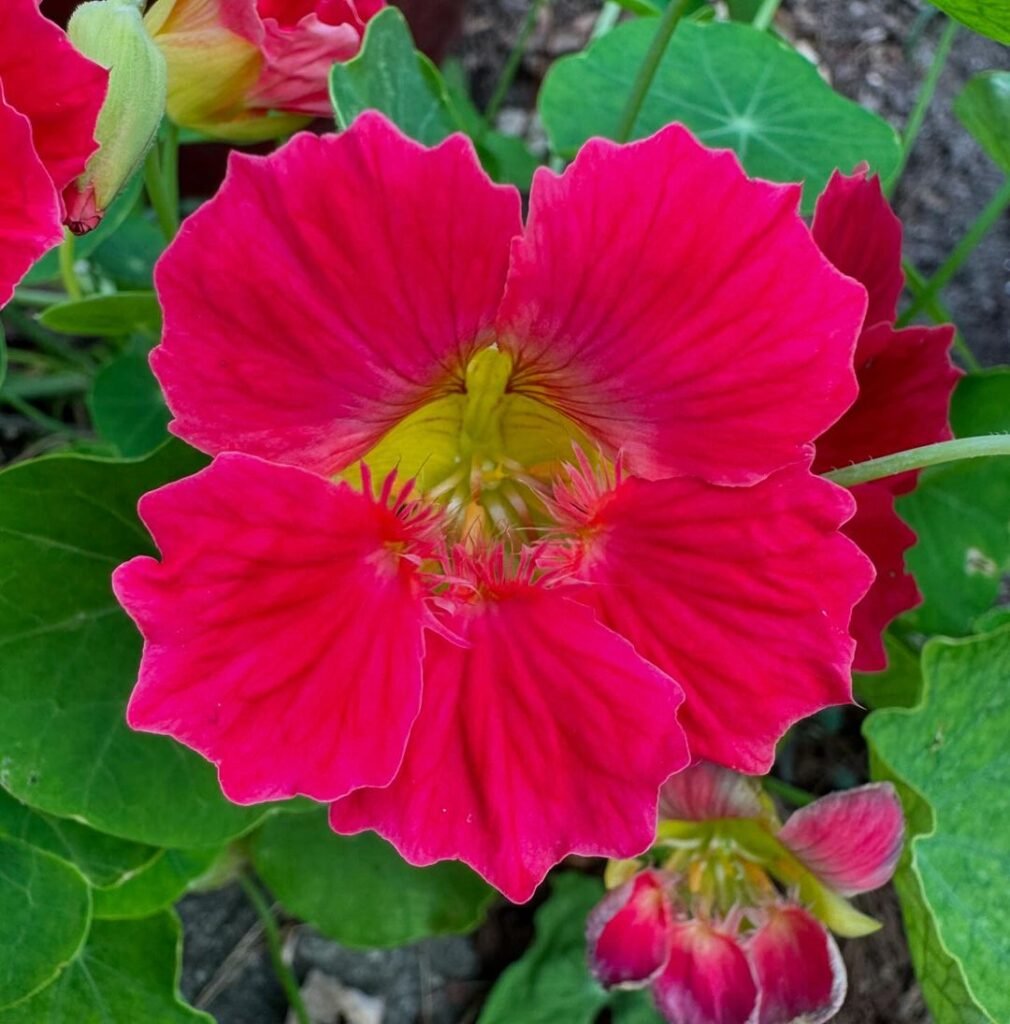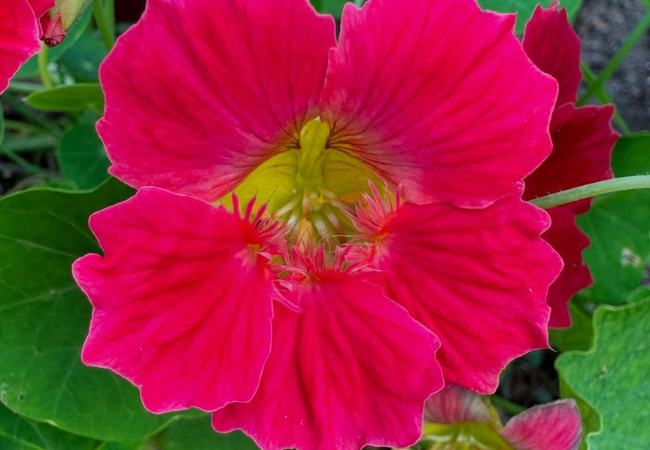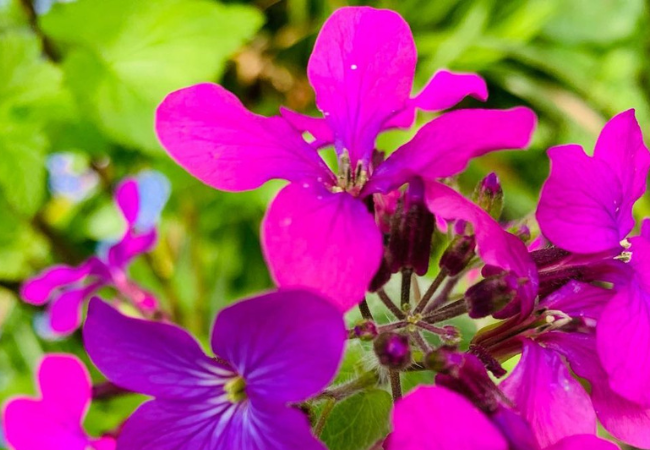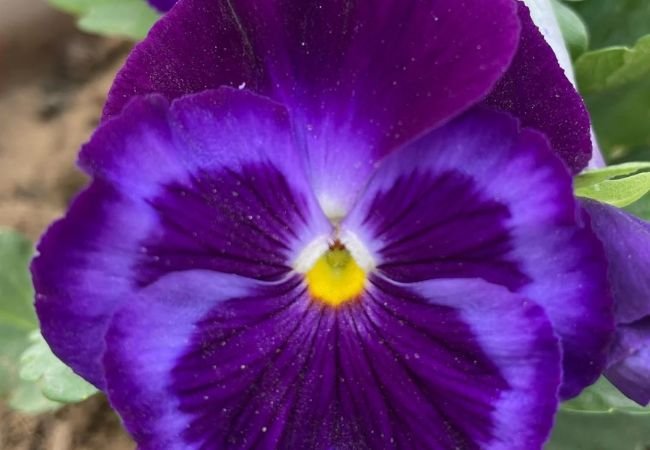Discover the colorful world of Nasturtium Flowers. Learn how to grow these easy-care plants, their uses in cooking and why they’re great for gardens. A helpful guide for beginners and experienced gardeners alike.
Have you seen flowers that look like little trumpets in orange, red or yellow? Those might be Nasturtiums! These cheerful flowers are easy to grow and can even be eaten. Let’s learn more about Nasturtiums and how you can grow them at home.
Here’s a structured chart with information about nasturtiums:
| Category | Information |
|---|---|
| Botanical Name | Tropaeolum majus |
| Common Name | Nasturtium |
| Plant Type | Annual |
| Hardiness Zone | 2-11 |
| Sun Exposure | Full sun to part shade |
| Soil Type | Well-draining, fertile soil |
| Watering | Moderate |
| Growth Habit | Trailing or bushy |
| Height/Spread | 6-12 inches tall, spread of 12-18 inches |
| Special Features | Edible flowers and leaves, attracts pollinators |
What are Nasturtiums?

Nasturtiums are flowering plants that come from South America. They have round leaves and bright flowers that look like small trumpets. People grow them in gardens for their pretty looks and because you can eat both the flowers and leaves.
What Do Nasturtiums Look Like?
- Flowers: Shaped like trumpets, usually orange, red, or yellow
- Leaves: Round and green, looking a bit like lily pads
- Growth: Some types climb, others stay low to the ground
- Seeds: Large and wrinkly, easy to collect and plant
To learn more about different types of plants, visit the USDA Plants Database.
Growing Nasturtiums in Your Garden
Nasturtiums are easy to grow. Here’s what you need to know:
- Sunlight: They like full sun or light shade.
- Soil: They grow best in soil that’s not too rich. Don’t use too much fertilizer.
- Water: Water them regularly, but don’t soak the soil.
- Planting: You can plant the seeds straight in the garden after the last frost.
For more gardening tips, check out the National Gardening Association.
Caring for Nasturtiums
To keep your Nasturtiums healthy:
- Give them space. They can spread out quite a bit.
- Remove dead flowers to keep the plant blooming.
- Watch out for pests like aphids.
- In hot weather, give them some shade and extra water.
Uses of Nasturtiums
Nasturtiums aren’t just pretty. They’re useful too:
- Eating: Both the flowers and leaves are edible. They have a peppery taste.
- Companion planting: They can help keep pests away from other plants.
- Ground cover: Some types spread out and cover bare soil.
- Decoration: The bright flowers look great in any garden.
To learn about safe gardening practices, visit the FDA’s Food Safety Information page.
Nasturtiums in the Kitchen
Many people use Nasturtiums in cooking:
- Salads: Add the flowers and leaves to give salads color and a peppery kick.
- Garnish: Use the flowers to make plates look pretty.
- Pesto: You can make pesto with Nasturtium leaves instead of basil.
- Vinegar: Soak the flowers in vinegar to make a colorful, flavored vinegar.
Always wash Nasturtiums before eating them and make sure they haven’t been treated with chemicals.
Nasturtiums and Wildlife
Nasturtiums are great for attracting pollinators to your garden. Bees and butterflies love their bright flowers. Hummingbirds might visit them too. By planting Nasturtiums, you’re helping these important garden visitors.
Growing Nasturtiums in Containers
Don’t have a big garden? No problem! Nasturtiums grow well in pots or hanging baskets. Just make sure the container has holes for drainage and use potting soil made for containers.
For container gardening tips, visit the USDA’s Container Gardening page.
Nasturtiums in History
People have grown Nasturtiums for hundreds of years. The Incas in Peru used them for medicine and food. In the 1600s, explorers brought Nasturtiums to Europe, where they became popular in gardens.
To learn more about the history of plants, check out the Smithsonian Gardens.
Nasturtiums are a great choice for any garden. They’re easy to grow, look beautiful and you can even eat them! Whether you’re a new gardener or have been growing plants for years, Nasturtiums can add color and fun to your outdoor space.
Remember, gardening should be enjoyable. Don’t worry if things don’t go perfectly at first. With a little care and patience, you’ll soon have a garden full of bright, cheerful Nasturtiums. Happy planting!
For more gardening tips and plant care guides, visit usagardenhub.com.







One comment on “Nasturtiums : Bright Flowers for Your Garden and Kitchen”